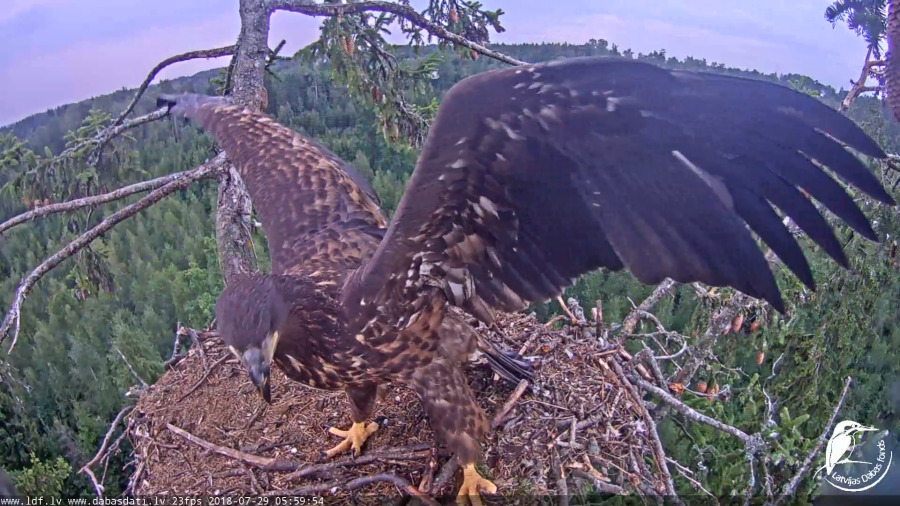i made a pair of pictures showing the tail of Robis and Vilnis a day before their departure from the nest. these pictures are from the early morning of July 12th. /
Es izveidoju attēlu pāri, kas parāda Robīša un Viļņa astes dienu pirms viņu aizlidošanas no ligzdas. šie attēli ir no 12. jūlija agra rīta.
Robis (on the left) has a beautiful undamaged tail with dark outer edges on each tail feather.
the tips of the tail feathers of Vilnis (on the right) are damaged because Robis had the habit of chewing and biting them. /
Robim (kreisajā pusē) ir skaista nebojāta aste ar tumšām ārējām malām katrai astes spalvai.
Viļņa astes spalvu gali(labajā pusē) ir bojāti, jo Robim bija ieradums tos košļāt.

the tail of Robis looks the same as it has looked later when she has come to the nest. there is no reason to believe that the tail of Vilnis has changed either. the outer ends of the tail do no cure or heal. his tail will look like this till next summer when he will get new feathers in the moult. /
Robisa aste izskatās tāda pati, kā viņa izskatījās vēlāk, kad viņš atgriezās ligzdā. nav iemesla uzskatīt, ka arī Viļņa aste ir mainījusies. astes ārējie gali neizārstējas/neataug. viņa aste izskatīsies tāda līdz nākamajai vasarai, kad viņš iegūs jaunas spalvas.
in a way this damaged tail is an advantageous thing for us: it helps us to identify the eaglets. if the tail of Vilnis weren't like this we couldn't know who has come to the nest at all, now that they don't have rings. /
kādā veidā šī bojātā asti mums ir izdevīga: tas palīdz mums identificēt ērgļus. ja Viļņa aste nebūtu tāda, mēs nevarētu zināt, kurš ir atnācis pie ligzdas, tagad, kad viņiem nav gredzenu.
i hope that the tail works well enough aerodynamically so that it doesn't cause any difficulty in flight. /
Es ceru, ka aste darbosies pietiekami aerodinamiski, lai tas neradītu nekādas grūtības lidojumā.










